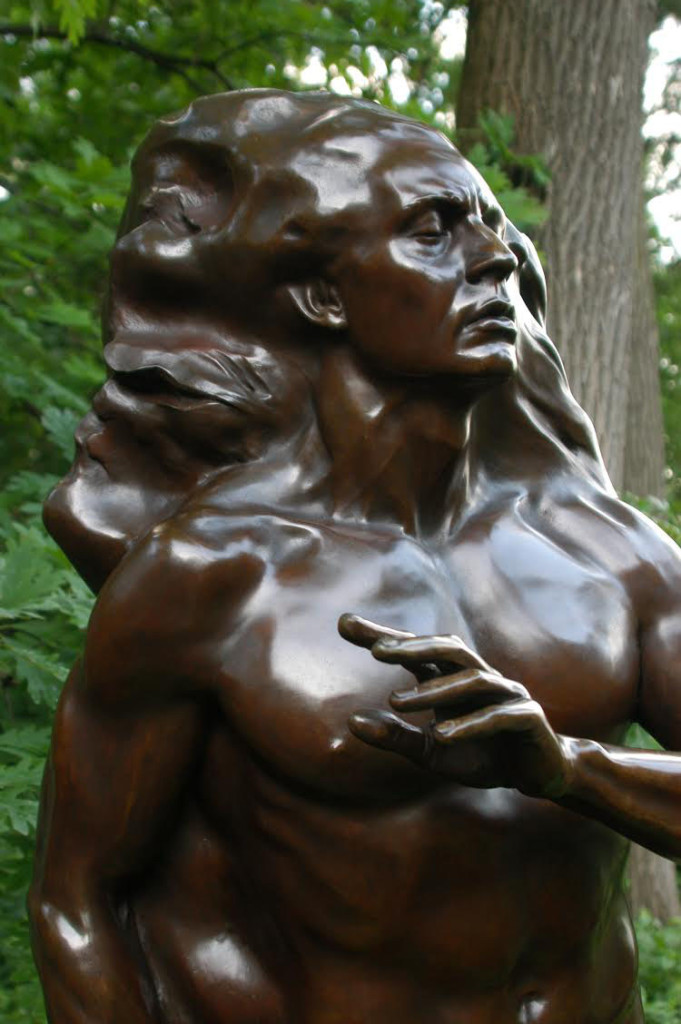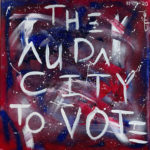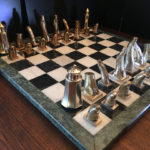TEXT © 2012 Reed V. Horth, for ROBIN RILE FINE ART
French master Auguste Rodin’s path to notoriety came at a time when his counterparts and classmates were already conducting retrospectives of their work. He was, in the classical sense, a “late bloomer”. After continued rejection from the Academie des Beaux-Arts (Salon) in Paris, Rodin became despondent that his career would be as anything other than a craftsperson and stone-cutter to his better-known master Albert-Ernst Carrier Belleuse (French, 1824-1887). Rodin was rejected continually from the Paris Salon, in one case 11 times for the same sculpture. Heavily influenced by the frescoes of Masaccio (Italian, 1401-1427) and Michelangelo (Italian, 1475-1564) during his trips to Santa Maria Novella and the Sistine Chapel which exposed him to the frescoes depicting the creation and expulsion of Adam and Eve. To create his own modern (1976) “Adam”, he knew he needed to push the boundaries of what had to that point been conventional. Already 36 years old, he knew this might be his last opportunity to prove himself worthy to be accepted at Salon. Working in Brussels, he chose a lean Belgian soldier named Auguste Neyt to serve as his model. His goal was to depict a figure so close to life that it would seem as if he were to open his eyes and breathe. Bearing a wound on his forehead, he appears to be a warrior returning from battle, but Rodin removed peripheral objects from him as to avoid creating a concerted narrative text. He stands lone as the perfect specimen of man. So perfect, in fact, that Rodin was forced to defend himself against the accusation of taking of body casts instead of sculpting the work from scratch.

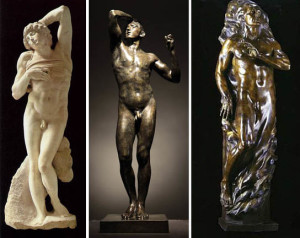
Later, during the construction of what became Auguste Rodin’s signature work “The Gates of Hell”, he purposefully depicted his Adam and Eve as exaggerated and tormented, perhaps as a sub-conscious method of ensuring a similar controversy did not erupt regarding any of his subsequent works. Rodin contrasted his soft, almost Pompeian Eve with an over-muscled Adam. He is pointing to the underground, just as Rodin’s St. John the Baptist did towards Heaven. This foreshadows the fate which awaits all those he sup from the Tree of Life; perhaps too, a reference to Michelangelo‘s life giving gesture of God to Adam in the Sistine Chapel. Rodin pays homage to Michelangelo by paying keen attention not only to the Sistine Chapel, but also his bonded slaves and the grotesque torso twisted Christ in his Florentine Pieta. Rodin’s “Adam” has a head twisted nearly perpendicular to his shoulder. Rodin later recalls and amplifies this torture in the Three Shades which were created to sit sentinel atop the completed gates. The taut muscles and ambiguous positioning appear to signify man’s ultimate helplessness against the omnipotent and angered God. As has become Rodin’s craft, the left hand falls diagonally to rest near the right knee, as if pulled by an unseen string. He believed that the entire theme of The Gates of Hell could be summed up in the figure of Adam and the Shade. All of the worldly suffering man undergoes from the birth to death. In 1889, the critic Gustave Geffroy described the Gates of Hell as the endless reenactment of the suffering of Adam. The Plaster of Adam was the first figure from the Gates to be exhibited as a single sculpture, at the Salon of 1881, released under the title The Creation of Man.

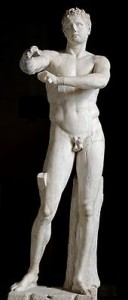
At Washington National Cathedral, Frederick Hart found himself as an outsider seeking admittance to a closed circle of Italian stonecutters who had generationally been working at the cathedral since it first broke ground in 1907. Hart’s stonecutting master, Roger Morigi (Italian, 1908-1995), was cut from the steely cloth of the old country and gave Hart no quarter in his apprenticeship. It was not until Hart proved himself worthy with a small gargoyle, that Morigi relented and allowed him to cut the precious Indiana limestone of the cathedral walls and pediments. After winning the commission to complete the six main sculptures on the Western façade, Hart endeavored to create his own perfect depiction of man, “Adam”. In 1975, model Robert Parke was chosen to assist Hart in creating the perfect amalgam of Michelangelo’s bonded slaves and Rodin’s “Age of Bronze”. Hart’s “Adam” remained elementally bound to the mountain of his making. He “emerges” in a pained contraposto, rather than being fully formed, as Hart borrowed the philosophy of early 20th Century Jesuit theologian Pierre Theilhard de Chardin (French, 1881-1955) who said that mankind was in a constant state of what he called “becoming”. Eyes closed, he is born of the elements, and emerges as a perfect specimen. One hundred years after the unveiling of Rodin’s statement of perfection “L’Age d’erain” (1876), came Hart’s “Adam” (1976).
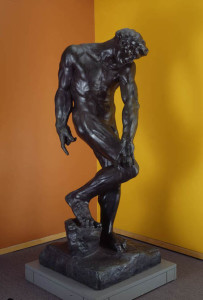

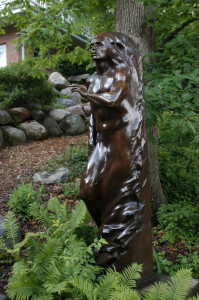
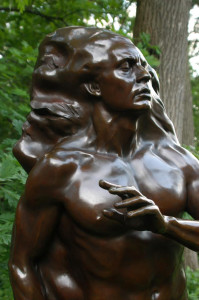
“Adam I portray as man the singular individual, the finite man, fully emerged yet still in a state of becoming, still part of the ongoing phenomenon of Creation”. ~Frederick Hart

Frederick Hart with stone carvers for “Adam” at Washington National Cathedral
****
